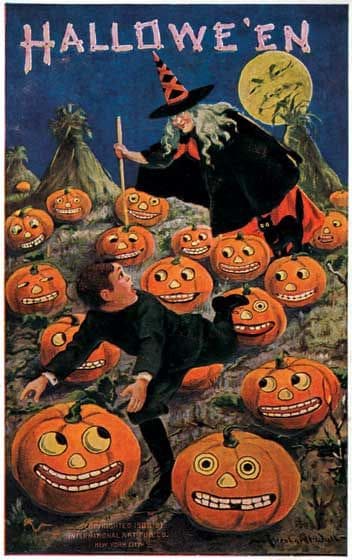
by Amanda Mather, Curator of Collections
The humble pumpkin, or Cucurbita pepo has a fascinating history, and a really interesting present. Pumpkins are actually just one variety of winter squash, the pumpkin is simply the most recognizable. One of the oldest domestic crops, humans have been having their pumpkins and eating them too for about 7,000 years. First grown in Mesoamerica and possibly the American south, pumpkins gradually spread all over the continent, because they are delicious, quite hardy and easy to grow in many climates.
Native peoples used all parts of the pumpkin, roasting the flesh or cutting it into long strips to dry for the winter. The seeds, which we all know are delicious, were eaten whole or could be ground into flour and helped fortify other dishes. The leaves and flowers were also cooked and eaten. In many parts of the world, the greens of the pumpkin are as valued as the fruit—and if you have never had a fried squash blossom I highly recommend it!
Native peoples crossbred and selectively bred pumpkins for so long, there are now an almost countless amount of varieties—just head on over to Trader Joe’s and you’ll see what I mean. After contact, the pumpkin spread all over the globe changing as it went. Today, across the world humans collectively grow about 30 million tons of pumpkins, with China leading the pack, growing about 1/3 of the world’s favorite orange squash.
 Of course, the pumpkin serves as an iconic reminder of the coming of fall and Halloween. The jack o’ lantern came to us by way of a British tradition of carving vegetables, particularly turnips, for Halloween. This was said to keep away the bad spirits that came with All Hallow’s Eve. (note: if you’ve never seen a carved turnip, look to your left and prepare to be horrified.) When British, Irish, and Scottish folks immigrated to the United States they began using the much more common, not to mention larger, pumpkins. Today in America we collectively spend around $380 million on our beloved jack o’ lanterns each year—that’s a whole lot of green for a whole lot of orange!
Of course, the pumpkin serves as an iconic reminder of the coming of fall and Halloween. The jack o’ lantern came to us by way of a British tradition of carving vegetables, particularly turnips, for Halloween. This was said to keep away the bad spirits that came with All Hallow’s Eve. (note: if you’ve never seen a carved turnip, look to your left and prepare to be horrified.) When British, Irish, and Scottish folks immigrated to the United States they began using the much more common, not to mention larger, pumpkins. Today in America we collectively spend around $380 million on our beloved jack o’ lanterns each year—that’s a whole lot of green for a whole lot of orange!

